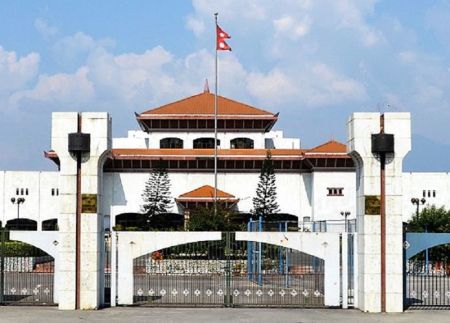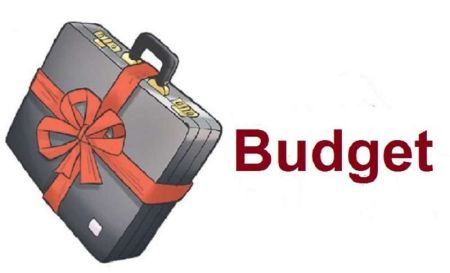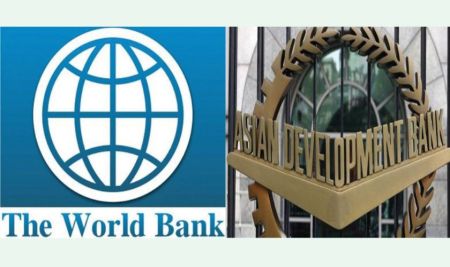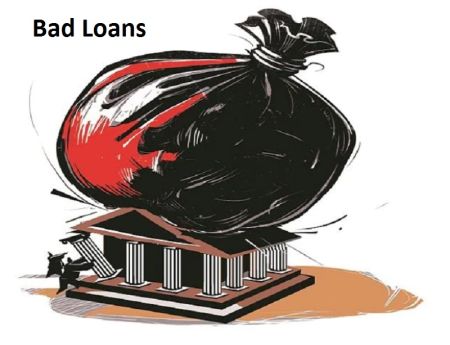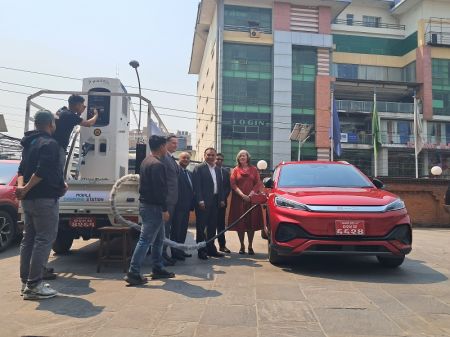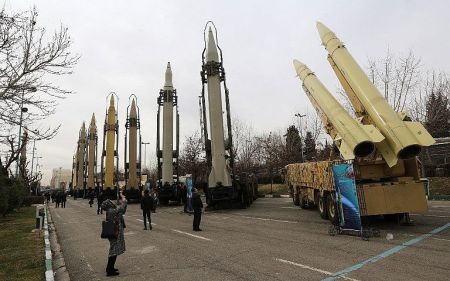“BBIN MVA can benefit Nepal the most”
 Sujeev Shakya
Sujeev Shakya
Chairman, Nepal Economic Forum
CEO, Beed Management
How significant do you think the BBIN MVA is for Nepal? What opportunities does it create for its signatories in terms of trade integration in the South Asian sub-region?
BBIN MVA is significant because of Nepal’s landlocked status and if we want to look at our comparative and competitive advantages, connectivity beyond India makes more sense. BBIN will basically help us to connect with Bangladesh and Bhutan via India. MVA is a buildup to get a protocol to ensure that we expand our connectivity and go beyond the dependency on India.
We have also included Myanmar in the studies on the BBIN MVA. So if you think of the containerized movement of goods from Nepal to Myanmar and Nepal to Bangladesh, and vice versa, I think BBIN MVA will be a tremendous opportunity for us to broaden our trade base.
What challenges are there for implementing the agreement to establish seamless transport connectivity among the BBIN MVA signatories? How should the issues be addressed?
Basically, there are three big challenges to overcome. First, Nepal as a country has always been inward-looking and isolated. Due to this, we do not know how to deal with major regional and global issues. So, when we talk about BBIN, automatically the reaction is as if we are going to lose something.
Second, the entire border trade has been a big opportunity for the traders to make additional money by not paying taxes or declaring goods and their quantities inappropriately. So now if you look at the containerized movement between different countries managed by global logistics companies, then this opportunity at the border is going to disappear.
Third, people worry about the agents, traders and porters. They generally question what will happen to the livelihoods of the individuals who are dependent on border trade. But it’s basically like the questions raised on the advent of railways. People were against the railways because they thought trains will displace the horse carriages. But the reality is different across the globe when observing Europe (EU), Southeast Asia (ASEAN), East Africa (EAC), Gulf Countries (GCC), Central America (SICA) and South America (USAN and Mercosur). Globally, the more the integration, the better as it has benefited the countries. We don’t have this sort of mindset which is a major challenge for us.
Also, the private sector leaderships haven’t yet understood the significance of regional integration. It is because most Nepali private sector bodies are political in nature. So, there is going to be lots of opposition on the ground and there is a tendency to term BBIN MVA as a negative initiative with a lot of problems rather than describing its benefits which is going to open more doors of opportunities for us.
Looking at our bilateral relationship with India, whenever either of the countries has wanted, they have created lots of non-tariff barriers and lots of issues in terms of restraining or impacting trade. So, it is all about mindset. The key thing here is whether the countries take this positively and make it work or they bring in lots of problem from the very beginning to prove that BBIN MVA is going to fail. Regional integration is not like we are inventing something new, but this is a time-tested cooperation among the nations happening across the world. We have to think from the perspective that there will be issues on the ground and find ways to face the challenges and ensure this initiative will work.
Since BBIN MVA aims to facilitate trade integration in the South Asian sub-region, the trade facilitation processes should be focused on removing both tariff and non-tariff barriers. From the currency convertibility to the free movement of goods and people, all barriers need to be removed. For instance, there are a lot of problems like the quota system in export/import between the countries which need to be abolished. A competitive economic environment will be achieved only when there are no barriers to trade and movement of people.
Foreign exchange is one of the major issues in the sub-region at present. How can we resolve the issues of currency exchange?
This is where we have to bring in digital technologies. Starting cashless transactions and introducing digital systems in the process will be very helpful in addressing the issues of currency exchange. A mechanism can be devised to enable people travelling across the BBIN nations to use a single bank card for transactions. We can even have a system where smartphones can be used for digital transactions.
Some concerns related to possible environmental impacts of BBIN MVA have been raised. How can such impacts be minimized while constructing the required infrastructures for the movement of vehicles?
Only Bhutan has major environmental concerns among the four BBIN nations. Nepal already has enough environmental impacts due to various reasons. The increased vehicular movement will add nothing new.
After the implementation of BBIN MVA, there will be containerized movement of vehicles which will be more structural than the movement of small vehicles at present. Bhutan has been trying to control the incoming vehicles, but they will eventually realise the importance of regional trade integration. I think there won't be any major issue if we have proper regulations in place.
Across BBIN, we already have the infrastructure for seamless vehicular movement. What we need is to figure out how BBIN MVA is going to be implemented and how the facilitation centers will be created at the border points. India and Bangladesh already have some integrated customs points. A lot of integrated customs points will be set up throughout the borders of Nepal, India and Bangladesh.
Nepali truckers engaged in cargo transport seem to be worried about losing their business after MVA is fully implemented. What could be the ways to secure their business?
The Nepali transport companies operate through a highly syndicated system. So, the transportation costs are higher here. The high cost of vehicles in Nepal also attributes to the higher costs of transportation. There are various regions across the world with high vehicle taxes. For instance, taxes for buying vehicles in Schengen countries are much higher compared to other parts of Europe. But the countries have been applying ways of equalization. Similar approaches can be implemented here. For example, customs duties can be reduced or waived on the import of trucks.
Nepali trucking and transportation business has survived by two major factors with one being the politically protected syndicate system and the other being the high pricing. So a new initiative like BBIN MVA is going to be disruptive for them.
We must understand that BBIN is not the first regional integration initiative in the world. At the moment, we don't need to derive experiences from Europe. Eastern African examples can be very much useful for us. We can learn from the integration of Tanzania, Rwanda and Uganda and study how they are functioning. Likewise, we can also look into how stuffs move between Thailand and Cambodia and Cambodia and Laos.
Four years have already been spent on negotiations for BBIN. Will it finally materialise even at the cost of Bhutan opting out?
We have to wait until the November 2018 general assembly elections in Bhutan. It is not that they have rejected the negotiations completely.
I think Bhutanese well understand the importance of BBIN MVA for their country. It is because the countries will engage in talks about sharing the power grids after Bhutan agrees. We all need common grids to supply power through interconnected lines between India, Bangladesh, Nepal and Bhutan.
India needs this initiative for its own benefits. The country has bilateral trade agreements with other nations in the South Asian sub-region. However, BBIN MVA is important for India to leverage its trade through connectivity with Nepal, Bangladesh and Bhutan. Similarly, it is important for them to extend the trade of East and North East parts of the country. This will be a win-win situation for the countries in eastern South Asia. Also, with the SAARC dead, BBIN is the only option for the nations in the sub-region as the Bay of Bengal Initiative for Multi-Sectoral Technical and Economic Cooperation (BIMSTEC) is much bigger for them in terms of trade integration and economic cooperation.
Given the sluggish implementation of the South Asia Free Trade Area (SAFTA) agreement to create a free-trade regime in South Asia, how successful do you think will be the BBIN Initiative?
As I said earlier, it depends on the mindset. For SAARC, you have to look for a new resolution. BBIN MVA can benefit Nepal the most. But unfortunately, our political sphere adheres to things like nationalism and socialism and doesn't want to easily open up for new initiatives.Imagine a situation where Nepal’s trade with India and other eastern South Asian nations and accessibility to China increases. This will be a great opportunity for Nepal to expand its trade.
Nepal is a signatory to both BRI and BBIN that are seen as key steps in regional trade integration. Are there any overlaps in implementing both initiatives that Nepal needs to be aware of?
There are no overlaps. We can take both initiatives as complementary to each other. For us, it will be like getting cross ventilation with BRI and BBIN. We open the windows of one side with BRI and the other side with BBIN which gives us the cross ventilation in trade and economic cooperation. This is why Nepal can benefit the most.
“Removing hurdles to int'l trade will translate BBIN MVA as boon for Nepali economy”
 Rajan Sharma
Rajan Sharma
Former President
Nepal Freight Forwarders Association
BBIN MVA is expected to play an important role in trade integration of the South Asian sub-region. How can Nepal benefit from this?
BBIN MVA will create significant opportunities for Nepal if everything is taken care of in a proper way. There are a number of complications in our international trade despite the fact that the Nepal-India Trade and Transit Treaty covers many aspects to remove the hurdles.
BBIN MVA also facilitates alternative movement of transport for the Nepali traders and freighters. Until a few months back, the Kolkata Port used to be the only port we had access to. Access to the Vishakpatnam (Vizag) Port has provided us a choice. There is also a need for increasing our access to other ports in India and elsewhere. The BBIN MVA is likely to help us access ports in Bangladesh for our third country trade.
The four South Asian nations inked the BBIN MVA agreement in 2015 in Thimpu thinking that it will make a difference in the trade within the region, ensure seamless transportation of goods and people and reduce transport and logistics costs ultimately boosting the South Asian sub-region’s economic growth. There is no question that the opening of the borders, seamless transport connectivity and easing of restrictions are essential to boost trade in the modern day world. Nevertheless, the long-term economic implications of the agreements need to be closely looked upon before striking any deal. We don’t do sufficient homework before signing any international agreement. It has become a ritual for us to first agree on certain things with other nations and then start the homework without building proper domestic consensus.
What challenges should be addressed in the BBIN region in terms of trade facilitation that can hinder the proposed seamless transport and transit connectivity?
The challenges are basically due to the mindset of government agencies as well as the private sector. We need to look into why a country like India which provides transit to landlocked countries like Nepal and Bhutan is not willing to give that liberty in trade and transit. Illegal trade and flow of contraband items such as arms and ammunitions are two major issues in this regard. Similarly, infrastructural challenges related to hard and soft infrastructure also exist. Nepali importers have to clear five layers of customs and border points in Bangladesh, India and Nepal if they are to export goods originating from a third country from the Bangladeshi port. Now there is a need for the countries to adopt automation and start using IT for customs and border clearance processes. This will harmonise the customs procedures eventually reducing the cost of cross border trade in the region.
A number of initiations have been already taken in Nepal to systematize our international trade. The government has decided to set up the Nepal National Single Window (NNSW) and converge it with the regional single window to interchange data and information for paperless trade facilitation. Similarly, the Exim Code has already been implemented. Similarly, initiatives in customs modernization such as ASYCUDA World and ASYCUDA++ are also moving ahead side by side. Now all these initiatives need to be integrated with the regional mechanisms in order to ensure a smooth flow of logistics.
Three factors play key role in smooth transportation of any logistics with the first being seamless movement of goods followed by flow of information and flow of finance. While we’ve been emphasizing on seamless flow of goods, the other two factors have been quite neglected. Even among them, the flow of finance is the most neglected one which is particularly due to our existing foreign exchange control mechanism. We often face problems in transferring Indian currency to make payments to Indian suppliers because of the recurring shortage of INR in the domestic banking system. Similarly, we are required to carry out transactions in Bangladesh in US dollars. There is a need for establishing a mechanism which would enable traders to transfer additional money to suppliers and freighters during noticeable fluctuation in foreign exchange rates after receiving permit from the Nepal Rastra Bank.
Likewise, we also need to be aware of various other problems related to the transshipment of goods. For instance, we have been importing goods from India on the Cost, Insurance and Freight (CIF) basis. In this type of shipping arrangement, costs associated with the shipment and transit and insurance of goods are assumed by the suppliers. But once we start using the Bangladeshi port, Nepal-bound third country imports might not receive such coverage which will increase risks in our international trade. Also, there is a need to enhance the negotiation skills of Nepali importers to minimise such risks.
How do you think BBIN MVA can boost Nepal’s export competitiveness?
First, we need to identify tradable items in the markets across the sub-region. Even if we have exportable items, it will become quite difficult to export our products to markets such as India and Bangladesh as their compliance and standards for domestic as well as foreign goods have gone up in recent years. With the changing context in trade and transit, we need to relook the overall strategy and give special focus to address the biggest constraints related to quality compliance and certification of products. Our endeavours in identifying and promoting exportable items through the Nepal Trade Integration Strategy (NTIS) haven’t born fruits. The goods exported from Nepal should not be supplied in raw forms. Oranges and betel nut, for example, should not be picked from the trees and supplied right away to the market after little or no value addition. Such items need to be well processed, sanitized, packaged and labeled before they are supplied to the market. The absence of accredited labs adds to our problems in exports. If we address all these issues, there is no doubt that BBIN MVA will be a boon for the Nepali economy.
Will the implementation of BBIN MVA resolve issues related to demurrage and detention being faced by Nepali importers?
Delivery at Terminal (DAT) is one of the ‘incoterms’ set and defined by the International Chamber of Commerce (ICC) in international shipment of goods. Under this, the supplier is responsible for the clearance of any consignment until it is received by the consignee. If Nepali importers can negotiate with their suppliers in DAT terms, the risks associated with demurrage and detention in transshipment of goods will be minimised to a great extent. Nepali importers need to understand that negotiation with foreign suppliers can be a great tool to reduce delays and costs in the transshipment of goods.
In this regard, there is a major issue which needs to be sorted out to ensure the success of BBIN MVA. It is seen in many parts of the world that any transit providing country tries to have a hold on the delivery of the cargoes to the destinations. For instance, India’s transshipment mechanism requires us to use Indian trucks and railways to import goods. The problems are particularly created by the sluggishness in the services being provided by the state-owned Concor Railway. At present, sometimes it takes weeks for Nepal-bound cargo containers to reach the Integrated Check Point (ICP) at Raxaul from the Kolkata Port. Now, as we are entering into a new era of connectivity in the South Asian sub-region, the government needs to seriously discuss with India to resolve these problems.
What problems of Nepali freight forwarders need to be addressed for the successful implementation of BBIN MVA?
As end-to-end logistics service providers, we have been facing a number of problems. We guarantee our clients to hand over their shipments within the designated time. But the problems in the clearance processes at the Kolkata Port, transportation of goods and border entry of freights have been hindering us in providing our services. The government needs to understand that freight forwarders operate under certain standards set by global organisations such as International Federation of Freight Forwarders Association (FIATA), International Air Transport Association (IATA), International Maritime Organization (IMO) and regulations of Hague-Visby Rules.
Incorporating the provisions of the international conventions under the World Trade Organization (WTO) in bilateral and regional trade mechanisms will be helpful in addressing our problems. WTO has broadly defined the transit facilities that member nations need to provide to each other. Similarly, electronic documentation and establishing an efficient mechanism for the smooth flow of finance in export/import can ease a number of problems being faced by us. The flow of finance needs to be managed in such a way that it leaves no room for money laundering and misuse of Nepali/foreign currencies.
Nepali truckers engaged in cargo transport seem to have been worried about losing their business after MVA is fully implemented. What could be the ways to secure their business?
There are some ways to address their concerns. One is the border-to-border movement of goods among the BBIN countries rather than end-to-end transportation. Similarly, there can be an arrangement to harmonise the costs of logistics and transportation across all member nations. It can spur competitiveness in logistics and transportation business across the region. Similarly, the BBIN MVA hasn’t covered security of vehicles and crew members. Nepali vehicle crews in the past have faced lethal attacks and looting of the goods in India while transporting goods to India. Use of Radio Frequency Identification (RFID) can be very helpful in tracking and monitoring the movement of vehicles. The pilot project in using RFID tracking system in freight containers hasn’t progressed much. Nepali freight carriers are required to carry bank guarantee while entering India, whereas Indian carriers do not have to show any such document to enter Nepal. All these issues need to be addressed for making BBIN MVA a success.
The BBIN countries can create a pool of vehicles by incorporating both private and public transport service providers and operate it under the concept of Authorized Economic Operators (AEOs) of the World Customs Organization. Likewise, rules and regulations of BBIN MVA also need to be made compatible with similar global practices by evaluating the provisions of the TIR Carnets convention in international movement of goods and passengers in order to ensure seamless vehicular movement.
The government should provide incentives to logistics and transport service providers to increase their competitiveness. For instance, the customs duties being levied on the import of articulated vehicles should be reduced to enhance the inland delivery capacity of transport companies. The vehicular movement is likely to increase carbon emission concerns that can be addressed by setting standards in terms of axle load and size of wheels of vehicles along with designating trans-loading points and by keeping the roads in proper conditions. I think many such concerns could be addressed by operating the vehicles under the AEO modality.
Nepal is a signatory to both BRI and BBIN that are seen as key steps in regional trade integration. How do you compare the possible benefits from the two initiatives to Nepal?
BBIN MVA is much beneficial for us than BRI. India has been Nepal’s largest bilateral trade partner for ages and the two countries are tied by similar economic, political and social aspects. We know what our Indian partners think about Nepal and it is very easy to deal with them. In case of China, it is quite different.
The Chinese are very different and it is difficult for us to figure out what they think about us. Unlike India, we don’t have any sentimental attachment with the Chinese besides the profit and loss motive in business. Nepal has been facing many problems in trade and economic cooperation with India despite the centuries old ties between the two countries. In this context, our successful engagement with the Chinese is a matter of big doubt. Over the years, the inflow of cheaper Chinese goods has increased sharply and BRI is likely to swell it further in the coming years which will spell trouble for the domestic industries and businesses.
Customs data clearly show that there are very few exportable goods from Nepal to China despite the duty-free-quota-free access provided by the northern neighbour. Our trade is mainly with the sparsely populated Autonomous Region of Tibet. We haven’t been able to maintain the quality compliance of products to make them exportable to the mainland China. The road connectivity and the proposed railway link with China won’t bear fruit for us until and unless we have items for export. However, the influx of Chinese visitors in high numbers can impact the Nepali tourism sector positively.











